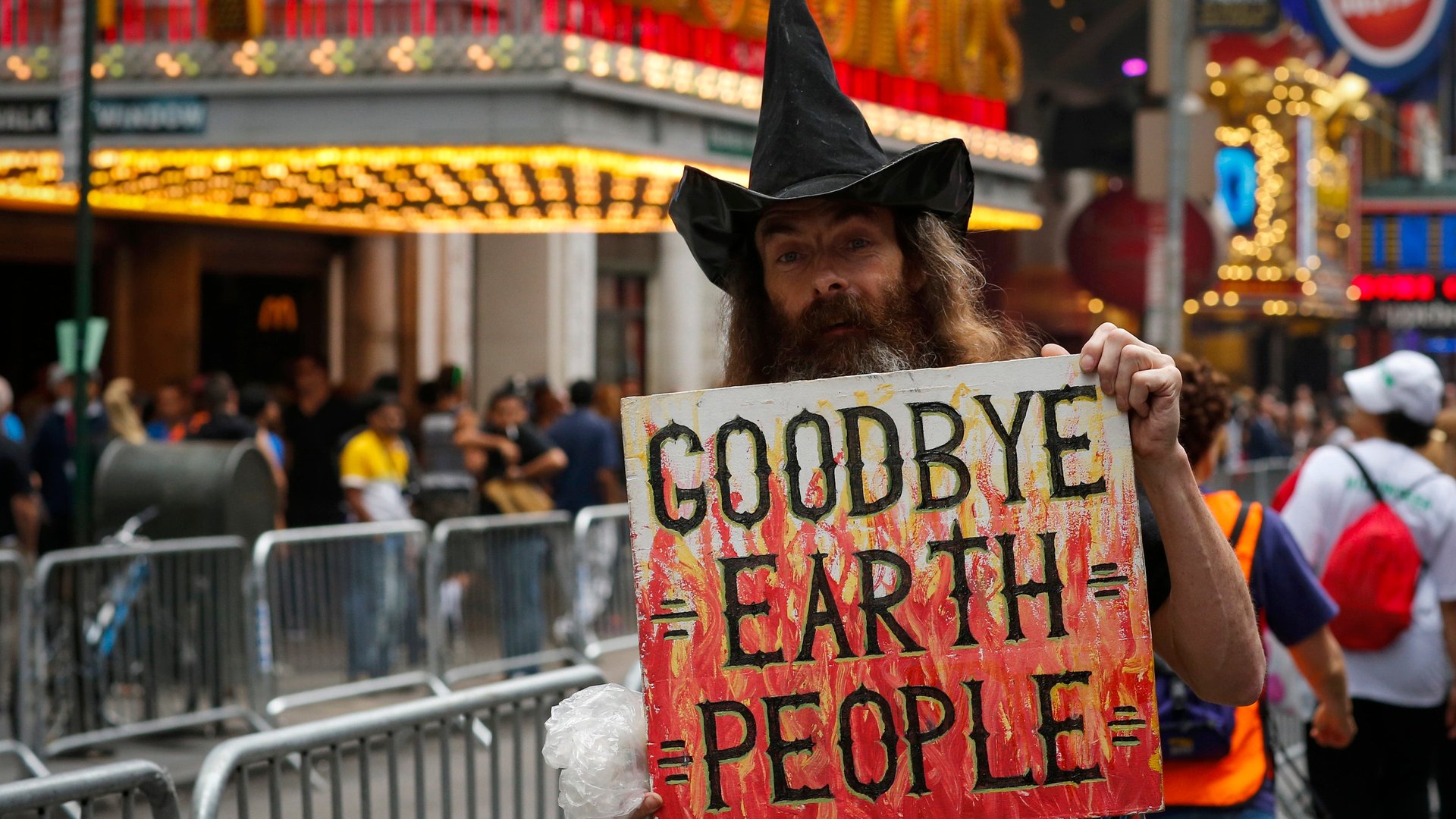Environmentalists tackling climate change should take a page from the gay marriage playbook
A decade ago, it was nearly inconceivable that in 2015, gay marriage would be legal across the US. It was just as inconceivable that marijuana would be fully legal in four states plus the District of Columbia.


A decade ago, it was nearly inconceivable that in 2015, gay marriage would be legal across the US. It was just as inconceivable that marijuana would be fully legal in four states plus the District of Columbia.
And yet, it happened. It happened in large part because voters who wanted change led, from the bottom up, often through citizen initiatives.
America can and does change its mind quickly, as this graphic from Bloomberg illustrates. Whatever you may think of legalized marijuana and same-sex marriage, their trajectory shows how quickly change can happen, particularly when driven by the people.
The same could happen on climate change. It needs to happen.
On Aug. 3, the Environmental Protection Agency (EPA) announced the final form of the Clean Power Plan. The plan would force states to reduce the amount of carbon they emit while generating electricity. It’s a step forward. But it’s also a fairly modest step. The EPA estimates that the plan would reduce overall US carbon emissions by just 6% by 2025, or around one-quarter of what the US has already committed to (which is, itself, short of what we need).
How do we do better? This federal plan is limited because as an agency, the EPA is constrained by what the Clean Air Act allows it to do. Even the current, modest plan will face years of challenges in the courts. Congress could do much more, but in this political environment that seems highly unlikely. (Remember, the majority of US Senators deny or question climate science.)
In short, Washington DC isn’t going to solve this problem. Progress has to come from elsewhere: the states and from the people. Here’s where replicating the success of marriage equality and weed legalization initiatives comes in.
In at least five states there have already been serious attempts to put a literal price on greenhouse gas emissions. Legislatures in Rhode Island, Massachusetts, Vermont, and Oregon all are weighing proposed legislation that would tax carbon emissions by polluters and return all or almost all of the money raised to residents of the state.
These laws are all variations on the theme of a revenue-neutral carbon tax. It works on the premise that whatever we put a tax on, we get less of. Put a tax on carbon (to reflect some of the true cost of carbon emissions to society), and carbon emissions will drop. And because the carbon tax is raising state revenues, you can use the extra money to send a check to taxpayers (as Oregon and Rhode Island would) or to slash other taxes that people pay (as Vermont and Massachusetts would).
The total tax bill someone pays stays the same. But energy sources which emit more carbon—coal, oil, and natural gas—would see their prices rise from that tax (reflecting the pollution they cause) while clean energy sources like solar and wind would just continue plunging in price. Utilities, businesses, and consumers would all have an increased incentive to switch from dirty energy sources to clean ones.
The Clean Power Plan even specifically allows the use of a carbon tax as a way to meet a state’s goals—with the benefit that a carbon tax could push a state beyond its carbon reduction goals and could be structured to keep rising after 2025.
Washington DC isn’t going to solve this problem. Progress has to come from elsewhere: the states and from the people.When it comes to addressing climate change, a revenue-neutral carbon tax is the favorite tool of economists, who praise it for being the cheapest way to lower carbon emissions. Even some conservative economists support it, in various forms. In addition to lowering carbon emissions without raising people’s tax bills, a price on carbon would accelerate the already incredible pace of innovation and price decline in solar, wind, and batteries. What’s not to love? According to our current Congress, plenty. A price on carbon might have more luck passing in some states.
In my own state of Washington, the effort is now bypassing a gridlocked legislature. An organization called CarbonWA is collecting signatures to put a revenue-neutral carbon tax initiative on the 2016 ballot for citizens to vote on.
As in other states, the CarbonWA initiative would raise the price of fossil fuels. It would then use that money to lower sales taxes. The average family would pay the same amount of taxes to the state. What’s more, it would specifically lower taxes on the working poor, making the state tax code less regressive and more progressive. (Disclosure: I’ve recently joined the Executive Committee of the CarbonWA effort and have donated to it.)
Think globally, act locally. Same sex marriage and marijuana legalization started in the states, at the grassroots level. Every state that addresses climate change emboldens the others, just as shifting public attitudes embolden politicians, and arguably, the court system.
Getting a citizen initiative onto Washington’s state ballot in 2016 (or any other state ballot) would send an even more powerful message and would encourage voters in other states to take the issue into their own hands.
States helped lead the nation on pot and gay marriage. Here in Washington, we passed citizen referendums on same-sex marriage and marijuana legalization in 2012. Five more states followed on gay marriage in 2013 alone, and three (including DC) have followed Washington and Colorado on pot. When one state leads, others will follow. Progress spreads.
Too many federal politicians have made it clear they can’t—or won’t—address climate change at this time. But citizens in states like Vermont, Massachusetts, Rhode Island, Oregon, and—yes—the other Washington can do it, and can start the ball rolling for the nation as a whole.
We’re the only ones who can.